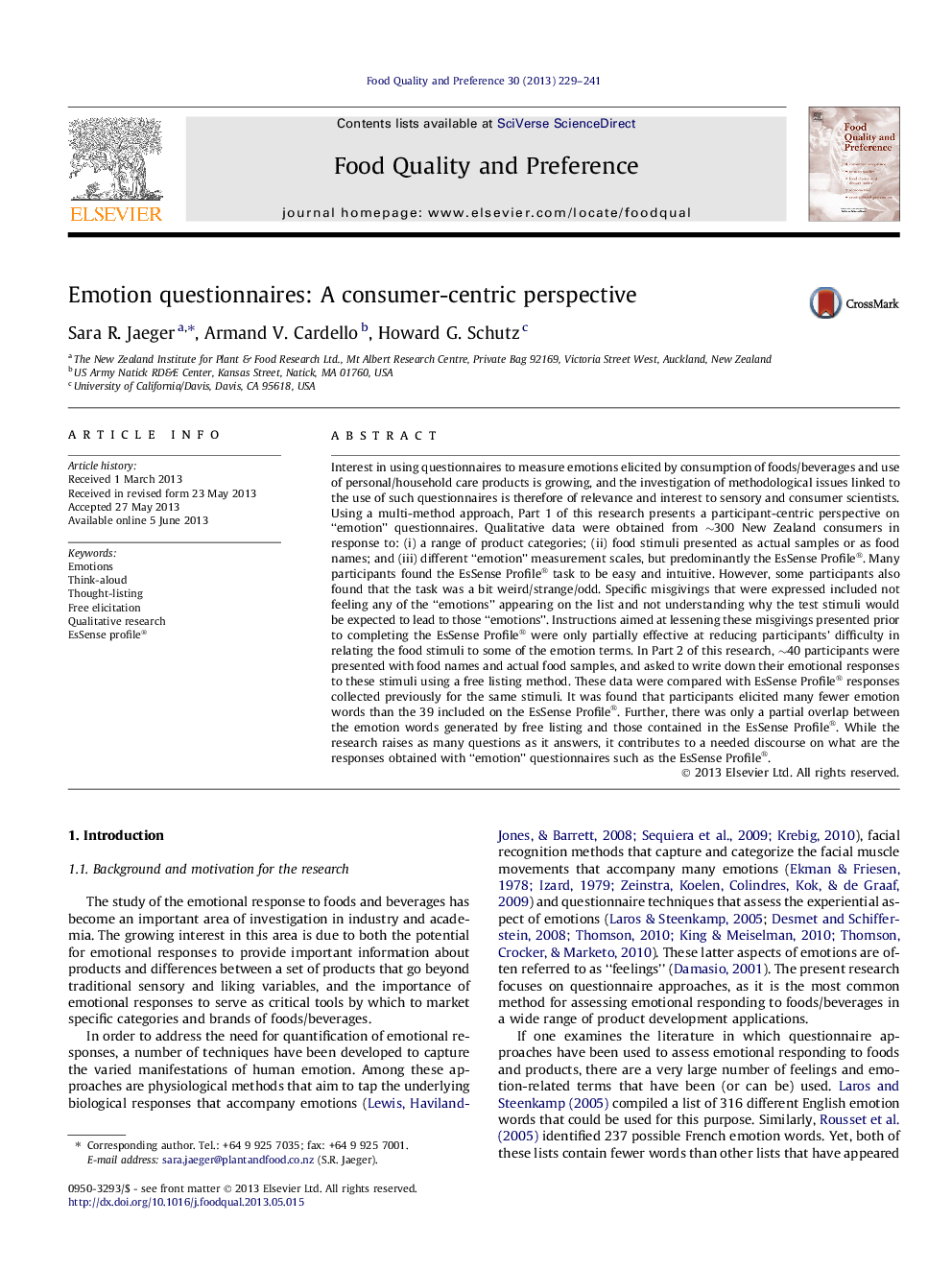| Article ID | Journal | Published Year | Pages | File Type |
|---|---|---|---|---|
| 4317249 | Food Quality and Preference | 2013 | 13 Pages |
•Discusses whether emotions are elicited by emotion questionnaires.•Completion of product-elicited emotion questionnaires is “easy, but a bit weird.”•Participants can struggle to connect food stimuli to questionnaire emotion words.•When free listing, participants often elicit only 1–2 emotion words per food item.
Interest in using questionnaires to measure emotions elicited by consumption of foods/beverages and use of personal/household care products is growing, and the investigation of methodological issues linked to the use of such questionnaires is therefore of relevance and interest to sensory and consumer scientists. Using a multi-method approach, Part 1 of this research presents a participant-centric perspective on “emotion” questionnaires. Qualitative data were obtained from ∼300 New Zealand consumers in response to: (i) a range of product categories; (ii) food stimuli presented as actual samples or as food names; and (iii) different “emotion” measurement scales, but predominantly the EsSense Profile®. Many participants found the EsSense Profile® task to be easy and intuitive. However, some participants also found that the task was a bit weird/strange/odd. Specific misgivings that were expressed included not feeling any of the “emotions” appearing on the list and not understanding why the test stimuli would be expected to lead to those “emotions”. Instructions aimed at lessening these misgivings presented prior to completing the EsSense Profile® were only partially effective at reducing participants’ difficulty in relating the food stimuli to some of the emotion terms. In Part 2 of this research, ∼40 participants were presented with food names and actual food samples, and asked to write down their emotional responses to these stimuli using a free listing method. These data were compared with EsSense Profile® responses collected previously for the same stimuli. It was found that participants elicited many fewer emotion words than the 39 included on the EsSense Profile®. Further, there was only a partial overlap between the emotion words generated by free listing and those contained in the EsSense Profile®. While the research raises as many questions as it answers, it contributes to a needed discourse on what are the responses obtained with “emotion” questionnaires such as the EsSense Profile®.
